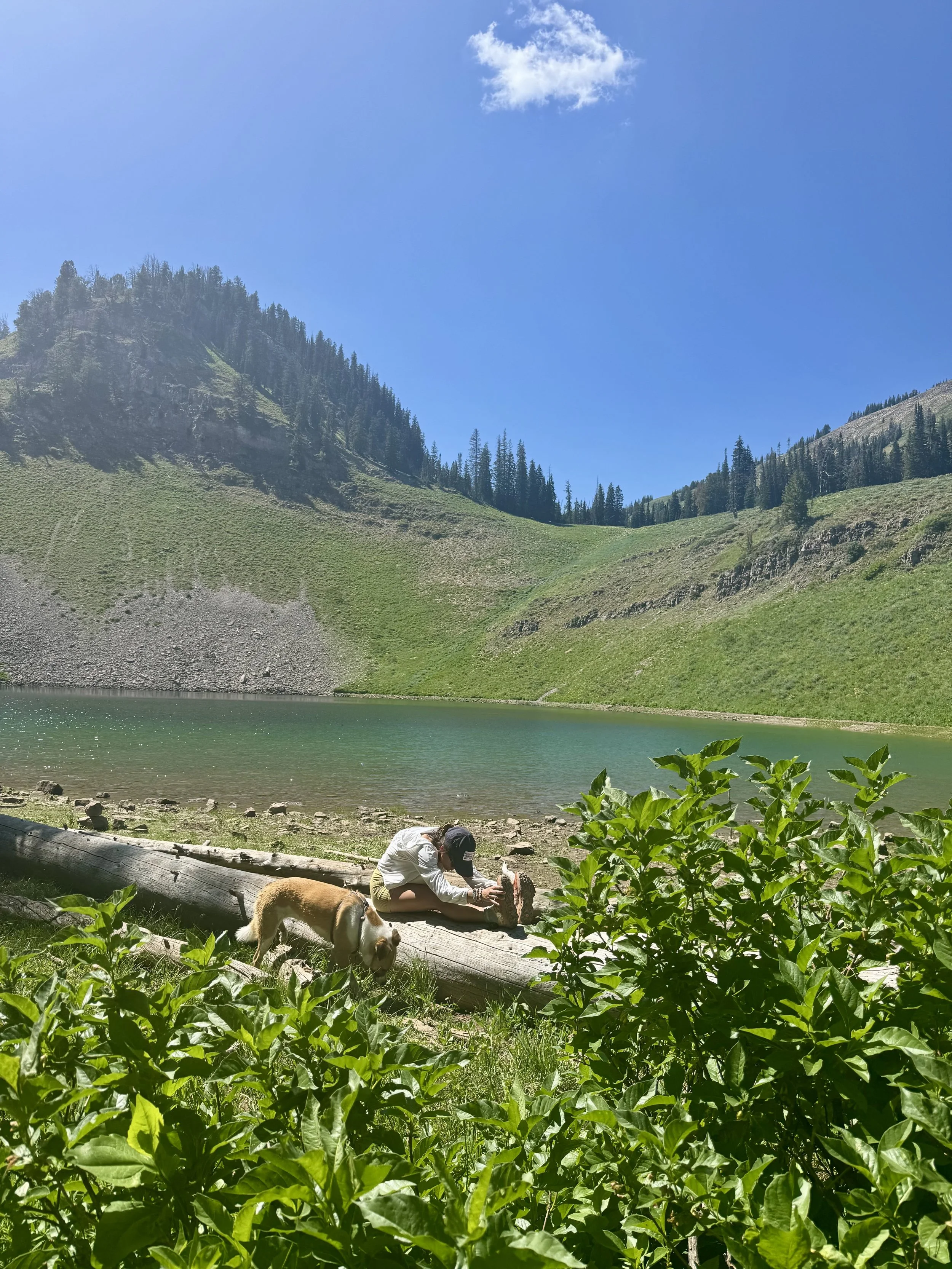Three Yoga Poses for Pitta Season
The Pitta season begins in late spring and continues through late summer, typically from June through September. During this time we experience the peak heat and intensity of the year. The fire and water elements are the most predominant during this season. Nature is radiating maximum energy and light. It is a time to embrace the vibrant energy while balancing the excess heat that can lead to inflammation, irritability, and burnout. Yoga practices that cool the body, calm the mind, and release excess heat from the torso are essential for this time of year.
Setu Bandhasana (Bridge Pose)
Start lying on your back with knees bent and feet planted hip-width apart.
Place your arms alongside your body with palms pressing into the mat.
Press your feet firmly into the ground and slowly lift your hips, creating a gentle arch in your back.
For a more restorative version, place a yoga block under your sacrum and let your body rest on the support.
Keep your neck neutral and gaze softly toward the sky.
Breathe deeply and imagine releasing any excess heat from your chest and heart center.
Hold for 5-8 breaths, then slowly lower down vertebra by vertebra.
If practicing with props, simply remove the block and rest.
Benefits: Bridge pose is a gentle heart opener that creates space across the chest while remaining cooling in nature. The supported variation allows for passive opening and relaxation, helping to release stored tension and heat from the upper body. This pose calms the nervous system and provides the opening that Pitta energy needs without generating excess heat.
Viparita Karani (Legs Up the Wall)
Find a clear wall space and sit with one hip close to the wall.
Slowly swing your legs up the wall as you lower your back to the floor, OR skip the wall and send your legs to the sky without support.
Your sitting bones should be close to the wall, but you can be a few inches away if that's more comfortable.
Let your arms rest by your sides with palms facing up.
Close your eyes and focus on your breath becoming slower and deeper.
Allow gravity to gently encourage blood flow from your legs back toward your heart, creating a natural cooling effect.
Hold for 5-15 minutes, breathing naturally.
To come out, bend your knees to your chest and roll to one side.
Benefits: This is a simple cooling and restorative pose that reverses blood flow, calms the nervous system, and reduces swelling in the legs and feet often experienced in heat. The inversion allows the blood to flow from the feet to the head, promoting relaxation and reducing stress while helping Pitta individuals unwind from their typically active minds.
Paschimottanasana (Seated Forward Fold)
Sit with your legs extended straight in front of you, spine tall and slight bend in the knees.
Place your hands beside your hips and gently press down to lengthen your spine.
Begin to hinge forward from your hips, keeping your chest open as you fold.
Let your hands rest on your legs, ankles, or feet—wherever feels comfortable without straining.
Keep your shoulders relaxed and away from your ears.
Allow your head to drop naturally and breathe deeply, focusing on releasing tension with each exhale.
Don't force the forward fold—let gravity and your breath deepen the pose naturally.
Hold for 8-12 breaths, then slowly roll up to sitting.
Benefits: The calming nature of Paschimottanasana helps Pitta individuals release tension in both mind and body. This gentle forward fold elongates the spine, massages the internal organs, and pacifies Pitta dosha by cooling down the body's internal heat. Forward folds are naturally introspective and help calm Pitta's typically intense mental energy.
Practice these poses during the cooler parts of the day—early morning or evening—and remember that during Pitta season, less intensity often brings more balance. Focus on cultivating a sense of ease, playfulness, and self-compassion in your practice to counter Pitta's natural tendency toward perfectionism and competition.



